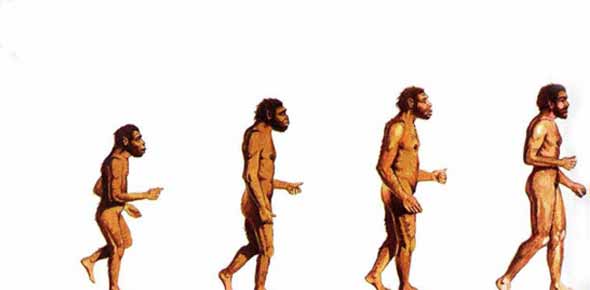Quiz: Test Your Knowledge of Symbolic Anthropology!
-
What is symbolic anthropology?
-
Study of biological evolution
-
Study of cultural symbols
-
Exploration of geological formations
-
Examination of political structures
-
Welcome to the fascinating world of "Symbolic Anthropology Quiz" where the richness of culture meets the depth of human interpretation. This quiz will take you on a journey through the lens of symbols, exploring the intricate tapestry of meaning embedded within societies. Symbolic anthropology, influenced by luminaries like Clifford Geertz and Victor Turner, unveils the significance of cultural symbols and their role in shaping human behavior. As you delve into the questions, you'll unravel the interpretive and symbolic approaches to capture the essence of cultural practices and analyze conflictive interactions.
Explore how symbols serve as sources of illumination social actions. Each question invites you to reflect on the complexities of cultural interpretation. This quiz isn't just about answering questions; it's a journey into the heart of anthropology, where symbols become the keys to unlock the secrets of human societies. Whether you're a student of anthropology or a curious explorer of human cultures, this quiz promises an enlightening experience.
(52).webp)
Quiz Preview
- 2.
What does Clifford Geertz's interpretive approach emphasize?
-
Biological determinism
-
Symbolic "sources of illumination"
-
Economic structures
-
Political hierarchies
Rate this question:
-
- 3.
Which term characterizes Clifford Geertz's method of ethnography?
-
Thick Description
-
Deep Analysis
-
Rich Narration
-
Thin Description
Rate this question:
-
- 4.
Who is associated with the interpretive approach in symbolic anthropology?
-
Victor Turner
-
Clifford Geertz
-
Emile Durkheim
-
Max Weber
Rate this question:
-
- 5.
What does "Thick Description" aim to achieve in symbolic anthropology?
-
Simplify cultural contexts
-
Provide superficial analysis
-
Offer a comprehensive understanding
-
Disregard individual motivations
Rate this question:
-
- 6.
Which anthropologist influenced Clifford Geertz's interpretive approach?
-
Emile Durkheim
-
Max Weber
-
Claude Levi-Strauss
-
Victor Turner
Rate this question:
-
- 7.
Where did the dissatisfaction with structuralism in anthropology originate?
-
Germany
-
France
-
United States
-
England
Rate this question:
-
- 8.
According to Victor Turner, how many phases are there in a conflictive interaction?
-
2
-
3
-
4
-
5
Rate this question:
-
- 9.
Who proposed the concept of "Social Drama" in symbolic anthropology?
-
Max Weber
-
Clifford Geertz
-
Emile Durkheim
-
Victor Turner
Rate this question:
-
- 10.
What is the symbolic approach associated with in symbolic anthropology?
-
Clifford Geertz
-
Victor Turner
-
Claude Levi-Strauss
-
Emile Durkheim
Rate this question:
-
Quiz Review Timeline (Updated): Jun 11, 2024 +
Our quizzes are rigorously reviewed, monitored and continuously updated by our expert board to maintain accuracy, relevance, and timeliness.
-
Current Version
-
Jun 11, 2024Quiz Edited by
ProProfs Editorial Team -
Dec 12, 2023Quiz Created by
Kriti Bisht
Culture And Anthropology Trivia
Culture is considered a central concept in anthropology, encompassing the range of phenomena that are transmitted through social learning in human societies. Test your knowledge...
Questions:
10 |
Attempts:
247 |
Last updated:
Mar 21, 2023
|
What Do You Know About The Book "Mirror For Humanity"
"Mirror for Humanity" is a terrific book on getting to know people and study anthropology. The author has done an amazing job that will hardly fall into the shadow of...
Questions:
10 |
Attempts:
74 |
Last updated:
Mar 14, 2023
|
Anthropology 205- Incorrect Ones
Explore key anthropological concepts with the 'Anthropology 205- Incorrect Ones' quiz. Assess your understanding on topics such as incest, marriage laws, and social practices...
Questions:
54 |
Attempts:
253 |
Last updated:
Mar 21, 2023
|
CP Bio 2 Final Exam Review 2 (2013)
This exam covers key concepts in paleoanthropology, focusing on ancient hominids like the Taung Child and Lucy, characteristics of hominids, and primate evolution.
Questions:
50 |
Attempts:
211 |
Last updated:
Sep 06, 2023
|
A 151 Book 1 Quiz!
Explore the intricate relationship between objects and their contexts in 'A 151 Book 1 quiz!' Assess your understanding of material culture, object-centered and driven approaches,...
Questions:
10 |
Attempts:
98 |
Last updated:
Feb 08, 2024
|
Anthropology Key Term Questions
There is a wide variety of words that are common in anthropology class, if one is not keen they may get confused by some of them. The quiz below has a list of terms commonly...
Questions:
52 |
Attempts:
735 |
Last updated:
Sep 07, 2023
|
 Back to top
Back to top








